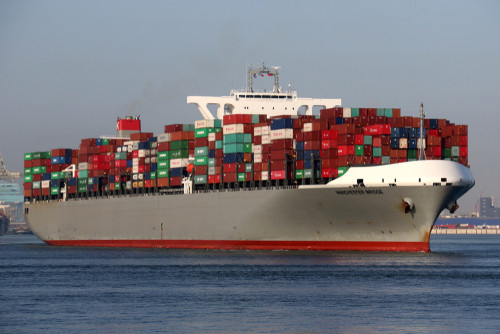The World Bunker Index Marine Bunker Exchange (MABUX) was steady over the past week with no real firm trends noted.
[s2If is_user_logged_in()]In particular, the 380 HSFO index rose slightly to US$365.92/mt, VLSFO increased moderately to US$461.43/mt while MGO climbed to US$518.01/mt, according to the weekly MABUX report.
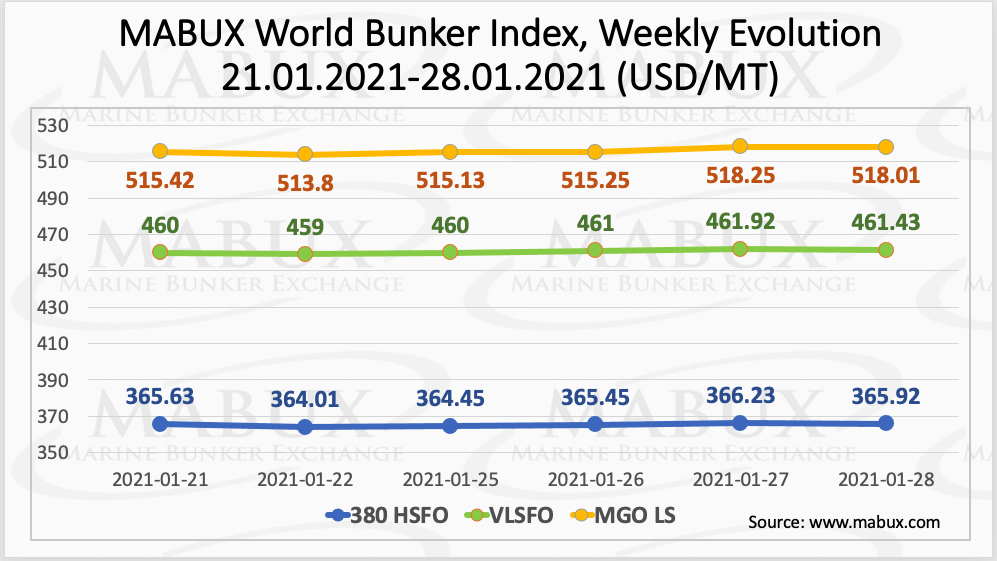
At the same time, the global scrubber spread (SS) (price difference between 380 HSFOs and VLSFOs) was also stable, as it added only US$0.32 and averaged US$95.28.
The correlation of MBP index (market bunker prices) vs DBP index (digital benchmark prices MABUX) in the four global largest hubs over the past week showed that 380 HSFO fuel remains moderately undervalued in three of four selected ports.
- Rotterdam: -US$16
- Singapore: -US$14
- Fujairah: -US$1
In Houston, this type of fuel was slightly overestimated (+US$3). Overall, the current trend shows a gradual rebalancing towards a moderate undercharging of heavy fuel in the global bunker market.
The VLSFO fuel price, according to the DBP Index, remained moderately overvalued in all selected ports, ranging from +US$6 in Rotterdam to +US$23 in Houston. Meanwhile, the DBP Index also showed that MGO LS was undervalued in all ports ranging from -US$15 in Fujairah to -US$30 in Singapore, with the exception of Houston, which was overvalued by US$12.

“The scrubber spread remains one of the most important indices for predicting the future development trend of global shipping in terms of compliance with International Maritime Organization (IMO) emissions requirements,” said MABUX.
One of the common ways of complying with IMO2020 emission requirements is the use of scrubbers in combination with relatively cheap high-sulphur fuel oil: the spread represents the economic attractiveness of such a solution.
According to MABUX, the SS fell in the first half of 2020 from US$350 (Singapore) and from US$290 (Rotterdam) to US$50 (14 April 2020) and to US$25 (27 April 2020) respectively, led to a sharp decrease in a number of scrubber orders as well as delays and cancellations of contracts for the installation of already ordered devices.
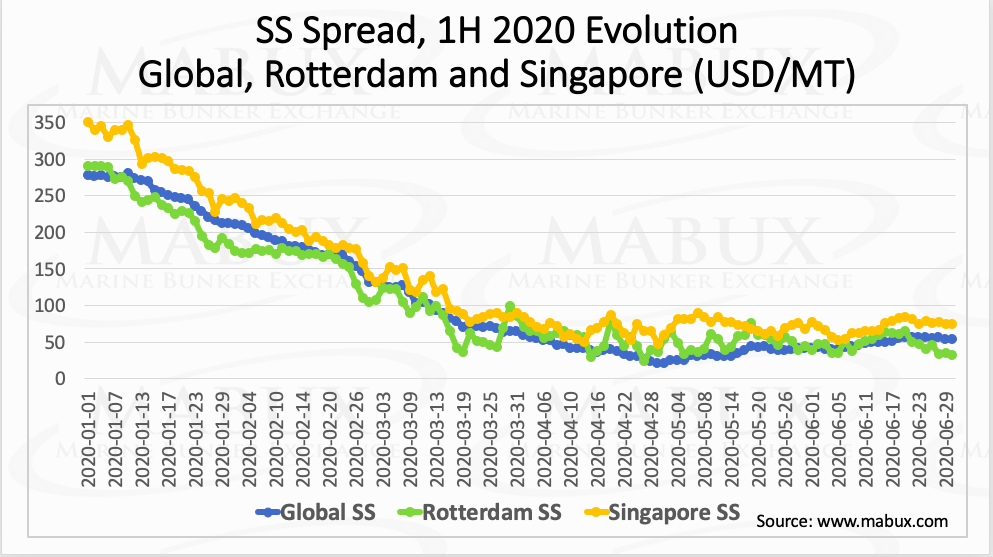
The second half of 2020 and early 2021 saw a gradual recovery in global bunker demand, supported by optimism for vaccines, which resulted in a moderate rise in bunker fuel prices and, as a consequence, a gradual recovery of the spread. Although not reaching the levels of early 2020, on 13 January 2021, the SS index for Singapore surpassed the US$100 mark with SS for Rotterdam coming close to that level as well.
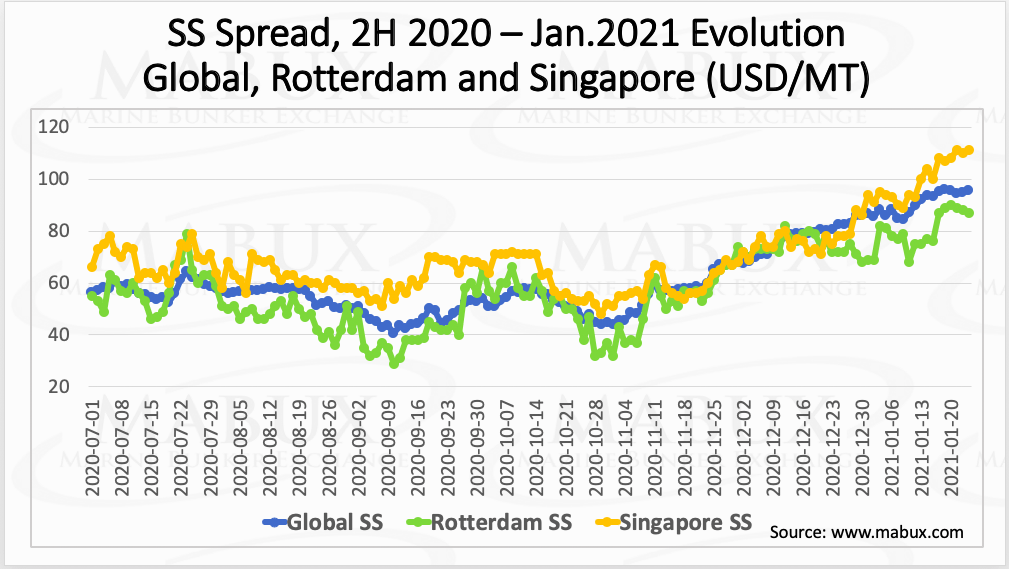
“This rise indicates an increased relevance of scrubbers solutions,” pointed out MABUX in its bunker and fuels report.
The current state of the oil futures market, with which the correlation of both types of fuel 380 HSFO and VLSFO is traced, does not clarify further trends yet, according to MABUX.
However, the forecast price for Brent in 2021 at US$60-65 per barrel allows assuming that SS will continue growing moderately, reaching US$120-130 in the medium outlook.
Future availability of 380 HSFO introduces uncertainty too, especially in context of actively discussed potential tightening of ecological requirements to marine fuels. In the meantime, the statistics from DNV GL on operating and ordered scrubbers do not look very optimistic so far, showing a slight increase from 3,154 ships in 2019 to 4,389 in 2020 and 4,555 in 2021, which represents only 7.5% of the total number of the global commercial fleet.
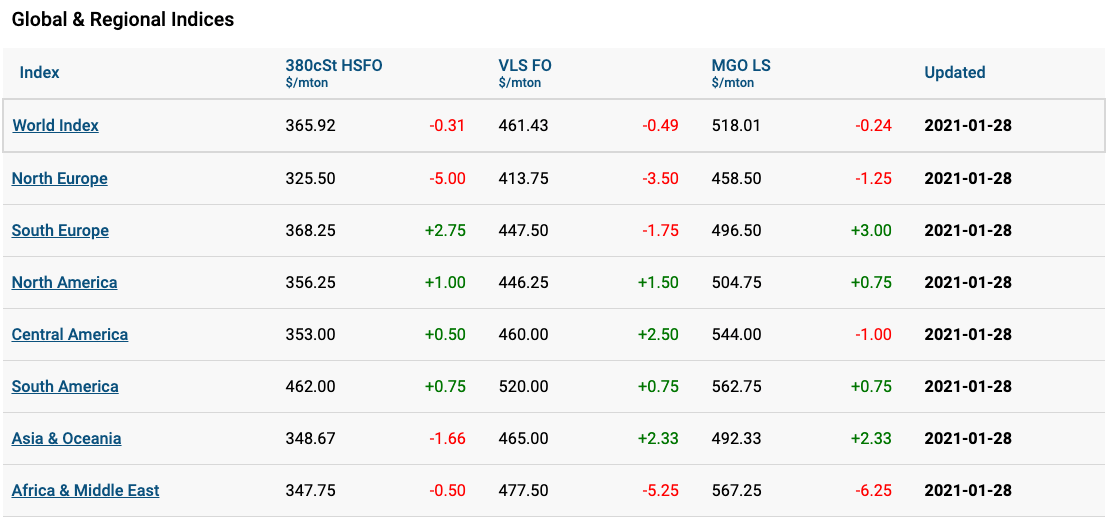 [/s2If]
[/s2If]
[s2If !is_user_logged_in()]Please login or register to read the rest of the story[/s2If]




